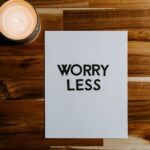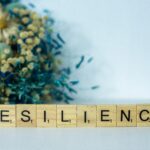When it comes to being a successful entrepreneur, failure is part of the equation. While failure is seen as incredibly negative, you can’t get to the top without taking risks, leaps and bounds that result in slip-ups.
Even if you’re not trying to start the next Microsoft or Apple, you’ll encounter failure as well. In fact, if you’re on track to exceptional success, you’re bound to encounter more of it than ever.
The stark difference between people who fail and still find success and those who let it drag them down is how they respond. You can’t control every setback in your life, but you can control how you react to it.
Read on to see how 2 successful entrepreneurs used failure as a springboard for success, and you can too:
Success isn’t about the end result, it’s about what you learn along the way.” – Vera Wang
Vera Wang originally tried to become a member of the U.S. Figure-Skating Team, but was rejected. Not one to be a quitter, she became an editor at Vogue, only to eventually get shot down in her attempts to become Editor-in-Chief.
Then, at age 40, she began designing wedding gowns. Now, millions of dollars later, her namesake company is synonymous with “I do.” In the end, her persistence paid off (heavily) and Vera Wang is one of the most successful fashion lines in the universe.
What Wang realized, and what you should realize too, is that the path to success is sometimes really arduous, so you have to learn to love the journey, not just the destination. And while some would consider her a late-bloomer in entrepreneurship, she knew that age is just a number, and that it’s never too late (or too early) to become successful.
“For every failure, there’s an alternative course of action. You just have to find it. When you come to a roadblock, take a detour.” – Mary Kay Ash
After spending a quarter of a century in the sales department at Stanley Home Products, Mary Kay Ash was still getting denied and passed up for promotions. She finally resigned in 1963, frustrated that the firm overlooked her for promotions even as men she trained rose through the ranks.
Ash channeled her frustration, and began writing an advice book for businesswomen. Then, she quickly realized that she was writing a business plan for herself. Mary Kay Cosmetics was born, and the rest, as they say, is history.
While Ash’s initial career track might’ve looked like a failure, she realized that no plan is set in stone, and that “failure” can always be redefined by switching paths.
First business models rarely pan out, but successful owners don’t throw up their hands and accept defeat when that happens. They adjust. They adjust thousands of times if they have to, until it works.
Even if your plan fails, it can still have an impact. By modifying it, you can make it successful, even if it isn’t what you originally intended.
Do you have any tips or stories of your own on recovering from failure? I’d love to hear them!










